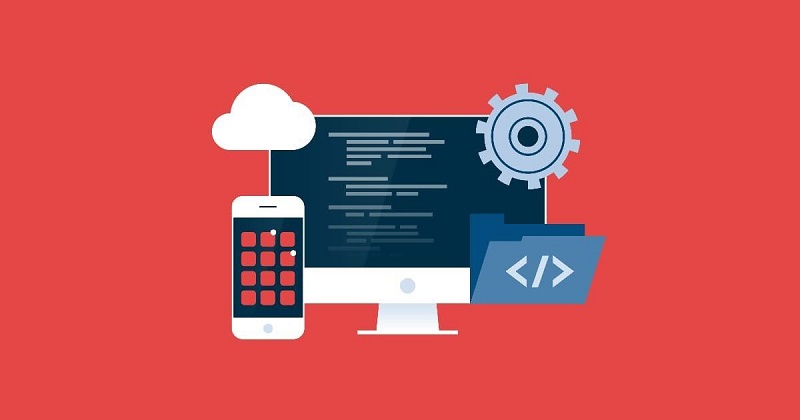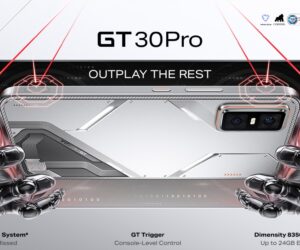The global industrial robotics market reached $13.2 billion in 2024, with manufacturing facilities worldwide deploying over 3.2 million operational robots. Yet beyond these impressive numbers lies a fundamental shift in how modern production lines integrate robotic systems—moving from traditional teach-pendant programming to sophisticated digital ecosystems that mirror real-world operations with unprecedented precision.
This transformation represents more than technological advancement; it addresses critical manufacturing challenges where even minor programming errors can cost thousands in downtime and where traditional robot setup methods often require production halts lasting several hours.
Current trends in manufacturing robotization
Manufacturing robotisation has evolved dramatically over the past five years, driven by Industry 4.0 principles and increasing demand for flexible production systems. Collaborative robots (cobots) now represent 34% of new robot installations, while traditional industrial arms continue dominating high-speed assembly lines.
The most significant trend involves adaptive manufacturing cells that can switch between product variants without extensive reprogramming. Companies like BMW and Tesla have implemented modular robotic systems capable of handling multiple vehicle models on the same production line. These systems rely heavily on advanced simulation software to validate new configurations before physical deployment.
Key statistics demonstrate this shift:
- 67% reduction in robot programming time using offline simulation
- 45% decrease in integration costs through virtual commissioning
- 28% improvement in overall equipment effectiveness (OEE) with digital twins
Modern robotization also emphasizes energy efficiency, with new installations consuming 20-30% less power than systems deployed just three years ago. This improvement stems from better motor technology, optimized motion planning, and intelligent power management systems.
Offline Programming: Advantages and Implementation Challenges
Offline programming eliminates the traditional approach where engineers manually teach robots positions using physical pendant controls. Instead, engineers create complete robot programs in virtual environments, dramatically reducing setup time and production interruptions.
Primary Advantages
Time Efficiency: Offline programming reduces robot setup from days to hours. While operators previously spent 40-60 hours programming complex welding sequences, modern simulation environments allow engineers to complete the same task in 8-12 hours. This time saving becomes crucial for manufacturers handling frequent product changeovers.
Risk Mitigation: Virtual programming eliminates collision risks during development. Engineers can test thousands of motion combinations without risking damage to expensive equipment or workpieces. This approach proves especially valuable in automotive manufacturing, where robot collisions can damage multi-million-dollar tooling systems.
Parallel Development: Programming teams can develop robot applications while production continues on existing lines. This parallel workflow enables manufacturers to maintain output while preparing for new product launches or process improvements.
Implementation Challenges
Calibration Complexity: Virtual models must precisely match physical reality. Even 2-3mm deviations between virtual and real coordinates can cause program failures. Achieving this accuracy requires detailed 3D scanning of work cells and continuous calibration updates.
Software Integration: Different robot brands often use proprietary programming languages and simulation environments. Integrating multiple robot types within a single production line requires sophisticated translation software and extensive testing protocols.
Skill Requirements: Offline programming demands new competencies from engineering teams. Traditional robot programmers must learn 3D modeling, simulation software, and virtual commissioning techniques. This skill transition often requires 6-12 months of intensive training.

Creating Accurate 3D Models of Work Cells
Precision in virtual modeling determines offline programming success. Manufacturing engineers must capture every relevant detail of physical work cells, from robot mounting positions to conveyor belt speeds and fixture locations.
Measurement Technologies
Laser Scanning Systems provide millimeter-accurate measurements of existing production areas. Companies like FARO and Leica offer portable coordinate measuring machines that capture complete work cell geometries in 2-4 hours. These systems generate point clouds containing millions of spatial coordinates, forming the foundation for accurate 3D models.
Photogrammetry complements laser scanning for capturing complex geometries and surface textures. This technique proves particularly useful for documenting legacy equipment where original CAD files no longer exist. Advanced photogrammetry software can achieve accuracies within 0.5mm using standard digital cameras.
Model Validation Processes
Coordinate System Alignment ensures virtual models match physical reality. Engineers establish reference points using precision-machined fixtures, then verify alignment through actual robot movements. This process typically requires 3-5 validation cycles before achieving acceptable accuracy levels.
Dynamic Behavior Modeling captures how equipment moves during operation. Conveyor systems, rotating fixtures, and moving barriers must be accurately represented in virtual environments. Static models often fail to predict real-world interactions, leading to program failures during implementation.
Modern manufacturing facilities increasingly rely on integrated design platforms that combine mechanical design capabilities with robot programming tools. For machining applications specifically, comprehensive CAD/CAM software solutions enable engineers to seamlessly transition from part design to robotic machining programs, eliminating data conversion errors and reducing programming time by up to 40%.
Simulation and Optimization of Robotic Processes
Advanced simulation environments enable engineers to test and optimize robotic processes before physical implementation. These virtual testbeds identify potential issues, optimize cycle times, and validate process parameters across thousands of scenarios.
Process Optimization Techniques
Cycle Time Analysis evaluates robot motion efficiency through detailed timing studies. Simulation software calculates exact movement durations, identifies bottlenecks, and suggests optimization strategies. Engineers can test different robot configurations, tool orientations, and motion paths to achieve optimal cycle times.
Path Planning Algorithms generate collision-free robot trajectories while minimizing movement time and energy consumption. Modern algorithms consider robot dynamics, acceleration limits, and smoothness requirements. These systems can reduce cycle times by 15-25% compared to manually programmed paths.
Multi-Robot Coordination
Interference Detection prevents collisions between multiple robots sharing work spaces. Simulation software models robot envelopes throughout complete motion cycles, identifying potential interference zones. This analysis proves critical in automotive body shops where 20-30 robots operate in close proximity.
Workflow Synchronization optimizes timing between coordinated robot systems. Advanced schedulers determine optimal handoff timings, minimize waiting periods, and maximize overall throughput. These systems consider variations in part dimensions, material properties, and process parameters.
Quality Prediction
Process Monitoring Integration links simulation results with real-world quality data. Engineers can correlate virtual process parameters with actual production outcomes, refining simulation accuracy over time. This feedback loop enables predictive quality control and proactive process adjustments.
Calibrating Virtual Models with Physical Equipment
The transition from virtual programming to physical implementation requires precise calibration between digital models and real-world systems. This calibration process determines whether offline programming efforts succeed or fail.
Calibration Methodologies
Robot Base Calibration establishes precise coordinate relationships between virtual and physical robot installations. Engineers use precision measurement tools to determine exact robot mounting positions, then adjust virtual models accordingly. Typical calibration tolerances range from 0.1-0.5mm depending on application requirements.
Tool Center Point (TCP) Calibration ensures virtual tool models match physical tool geometries. This process involves teaching robot positions with actual tools, then comparing results with virtual predictions. Accurate TCP calibration proves especially critical for precision applications like welding or assembly.
Validation Protocols
Graduated Testing implements systematic validation procedures starting with simple movements and progressing to complete production sequences. Engineers typically validate robot programs through five distinct phases: basic positioning, tool activation, part interaction, quality verification, and full-speed operation.
Statistical Process Control monitors calibration stability over time. Production facilities track positioning accuracy, repeat ability, and drift characteristics to maintain virtual model accuracy. Control charts help identify when recalibration becomes necessary.
Continuous Improvement
Feedback Integration incorporates production data back into virtual models. Real-world measurements continuously refine simulation accuracy, creating self-improving systems. This approach reduces the need for manual recalibration while maintaining high accuracy standards.
Version Control manages multiple model iterations as physical systems evolve. Engineering teams maintain detailed records of model changes, calibration updates, and validation results. This documentation enables rapid troubleshooting and supports compliance requirements.


Economic Efficiency of Robotization Projects
Manufacturing organizations evaluate robotization investments through comprehensive financial analysis that extends beyond initial equipment costs to include integration expenses, training requirements, and long-term operational benefits.
Investment Analysis Framework
Total Cost of Ownership (TCO) calculations include equipment purchase, integration services, training programs, maintenance contracts, and facility modifications. Typical robotization projects require 18-24 months to achieve positive return on investment, though this timeline varies significantly based on application complexity and production volumes.
Payback Period Factors depend heavily on labor costs, production volumes, and quality improvements. High-volume applications with significant labor content often achieve payback within 12-15 months, while specialized applications may require 36-48 months to justify investment costs.
Operational Benefits Quantification
Quality Improvements reduce scrap rates, rework expenses, and warranty claims. Robotic systems typically achieve 50-80% reductions in process variation compared to manual operations. These quality improvements often provide 20-30% of total project ROI through reduced quality costs.
Productivity Gains result from increased operating speeds, extended operating hours, and eliminated breaks or shift changes. Robotic cells can operate continuously for weeks or months with minimal supervision, providing significant throughput advantages over manual operations.
Safety Enhancements reduce workplace injuries, workers’ compensation claims, and regulatory compliance costs. Manufacturing facilities report 60-75% reductions in repetitive stress injuries and similar decreases in safety incidents after implementing appropriate robotization programs.
Risk Assessment
Technology Obsolescence considerations evaluate how rapidly advancing robot capabilities might impact current investments. Modern robotic systems typically provide 8-12 years of productive service before requiring major upgrades or replacement.
Market Flexibility analyzes whether robotic investments support changing market demands. Flexible robotic systems capable of handling multiple products or configurations provide better long-term value than specialized single-purpose installations.
The integration of robotics into modern manufacturing represents a fundamental shift toward intelligent, adaptive production systems. Success requires careful attention to virtual modeling accuracy, systematic calibration procedures, and comprehensive economic analysis. Organizations that master these elements position themselves for sustainable competitive advantages in increasingly automated manufacturing environments.
Through proper implementation of offline programming and digital twin technologies, manufacturers can achieve the dual objectives of operational efficiency and strategic flexibility that define success in today’s dynamic industrial landscape.








